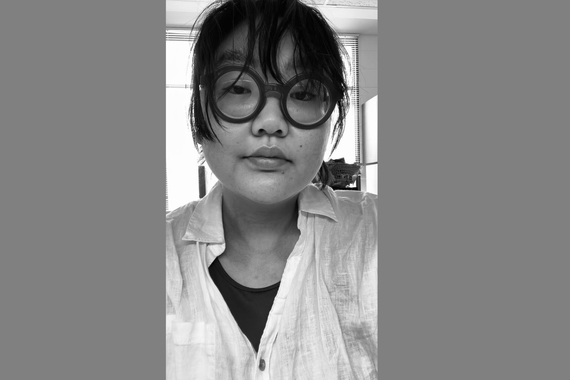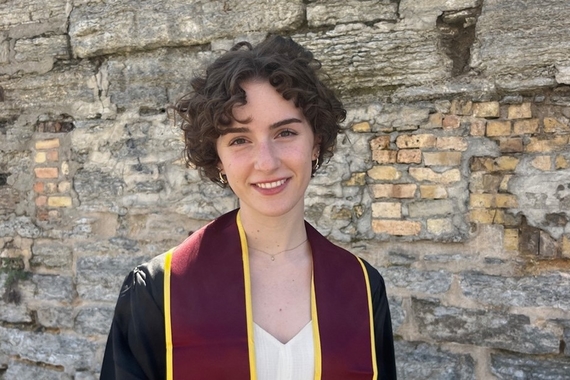Where It’s At: Encountering Art Across America
To see a work of art in person: its colors suddenly brighter, its impact more potent. Viewing world-famous art without the filter of a screen or a print is an experience not everyone can have—that’s why a new scholarship in the art history department can be life-changing for students.
This summer, art history major Tony Miller was given the opportunity to take a spectacular trip centered on examining modern and historical American art. Thanks to the Janet G. McCloud Travel Scholarship in American Painting, he was able to create and follow a personalized travel itinerary packed with museum visits, behind-the-scenes events, and conversations with curators.
“It really did feel like a once-in-a-lifetime opportunity,” he says a few days after returning home. “I'm still sort of processing it all.”
A Budding Artist
Studying art history wasn’t always the obvious path for Miller—it was actually a high school English course that sparked his love of visual art.
“I was taking a modern literature class where we read The Stranger by [Albert] Camus and [stories by Franz] Kafka,” Miller explains. “We learned about the modernist movement and we touched briefly on the art of that movement. I specifically remember really connecting with Guernica by Pablo Picasso. That's kind of where it all started for me.”
Miller also began refining his own artistic talent during his freshman year at the University. Before college, he felt he didn’t possess the skills necessary to succeed in or enjoy art class. This changed when he found his niche and started exploring the art of collaging. By now, Miller estimates that he has made over 100 artworks, one of which was featured on the cover of the most recent volume of the Minnesota Undergraduate Research & Academic Journal.
With his budding passion for visual arts, Miller kept looking for opportunities to grow as a student, an artist, and a person. This motivation (and a little bit of good luck) led to the travel scholarship application and, ultimately, his three-week-long art excursion across the country.
Moments to Remember
Before setting out on the trip, Miller worked with Jennifer Marshall—chair of the art history department and Miller’s advisor—to create the perfect travel plan. Marshall proposed Miller first fly to New York City to catch the end of the Winslow Homer: Crosscurrents exhibit at the Metropolitan Museum of Art (The Met).
In New York, he would also meet with artists and curators (including CLA alumna Patricia Marroquin Norby, the inaugural Associate Curator of Native American Art at The Met), attend concerts, and get a close-up look at the workings of some of the most influential museums in the world.
At the Museum of Modern Art (MoMA), Miller got to chat with curator Esther Adler and had a unique experience viewing some of the art. “I got to hang out a bit [at the museum] before it opened to the public,” he says. Undoubtedly one of the busiest tourist spots in the city, entering MoMA early was a significant moment for him. “I got to be [alone] in a room with Starry Night by Van Gogh,” Miller blissfully recalls.
He continued his journey by taking the Amtrak to cities like Philadelphia and Washington DC. Then, he flew home to Minneapolis for a few days before driving across the Great Lakes Region. “I drove to Duluth, and then through rural Wisconsin to see some sculpture parks, and then to Chicago and Detroit and back.”
Most of the places he went were completely new to Miller, who hadn’t had many chances to travel before this trip. He expresses his gratitude to those who made it happen, including donors and art history faculty such as Marshall.
“[This] was an experience that taught me a lot about viewing and understanding art as a material object, not just as a thing that exists in printed form or digital reproduction,” explains Miller. “What I was able to learn and encounter—and the perspectives of those I met along the way—through this scholarship I will certainly never forget.”
Art, Region, and Understanding
To an artist, location is a tool for creativity—it can stunt ideas, encourage them, or give someone an entirely new direction. During Miller’s exploration of visual arts cultures across America, he learned this importance firsthand.
“I was able to realize how important region is to how one creates or how it inspires one, be it through culture or even physical landscape,” explains Miller. “For me, traveling and being in different places inspired a lot of ideas for my own art, and [assisted] in my own learning and understanding of human experience.”
As Miller enters his senior year, he carries with him the memories and rich experiences of his summer adventure.
“I hope more people can see the stuff I saw,” he says. “Just go out and see the world.”
Q&A with Tony Miller
Favorite work of art from the trip:
Nothing struck me more than the art environments I saw, most notably Philadelphia's Magic Gardens by Isaiah Zagar and Dr. Evermore's Sculpture Park. I was amazed at the artists' dedication to their works, and their ability to create a completely unique and surreal spatial experience. At times it almost felt like I was having an out-of-body experience.
Most unexpected impact of this experience:
Realizing how important environment and region is to art. Not just in regards to exhibition and presentation like in a museum or a gallery space, but especially in its creation.
I was also able to find out what art I really connect with—before this trip I was the sort of person who felt the need to look at every single piece on display whenever I went to an exhibition space. But now after having only a few hours (or less) to spend at museums, in NYC and DC especially, I realized that I won't always have time to spend all day at a museum, and to think for a moment on what I really want to see.
Advice for other students:
Next time you find yourself in a space showing international art (especially contemporary), guess where the artist is from or where the work was made before looking at its didactic label—you can learn a lot about art and your own perception this way.
Sit down and look at whatever catches your eye for at least 15 minutes, or even up to an hour or more if you can. It's a common assignment in the field of art history, and it's been one of my favorites ever since my first time doing it. I think that today many (including me) have become so accustomed to scrolling through image feeds at such a rapid pace that we forget how to properly look at art, instead of thinking "I like that" and moving on. If you spend hours looking at just a handful of pieces you really like (or don't like), I can guarantee it will have been time better spent than attempting to look at everything.



